Simulations of the Rotor-Stator-Cavity Flow in Liquid-Floating Rotor Micro Gyroscope
Abstract
:1. Introduction
2. Model Parameters and Numerical Method
3. Results and Discussion
3.1. Mean Flow of the Axial Gap
3.2. Turbulence Statistics in the Axial Gap
3.3. Anisotropy Analysis of Turbulence in the Axial Gap
3.4. Skin Friction Coefficient
3.5. Flow Vortex Structure Distribution in the Radial Gap
4. Conclusions
- (1)
- Along the z-axis, the circumferential velocity gradually develops from a linear distribution to a non-linear distribution with separated boundary layers, i.e., from a torsional Couette flow to a Batchelor flow, as Re increases. The greater the Re is, the more the velocity gradient in the middle part tends to 0. The local Re (Rel) and the gap-to-diameter ratio (G) affect the boundary layers in different ways. The former mainly affects the velocity distribution near the stationary boundary, and an increase in it causes an increase in the velocity gradient. The latter mainly affects the velocity distribution near the rotational wall, and an increase in it causes a decrease in the velocity gradient. The radial velocity is in an S-shaped distribution under all three working conditions. Due to the centrifugal force, the fluid near the rotational wall flows outward along the radius, while that near the stationary wall flows inward along the radius to supplement the former. Both Re and the gap-to-diameter ratio affect the extremum of the radial velocity and its position along the z-axis. Compared with the circumferential velocity and the radial velocity, the axial velocity is quite small, nearly 0 in the axial slit.
- (2)
- The Reynolds stresses are mainly in an Σ-shaped and lateral U-shaped distribution at different values of Re and gap-to-diameter ratios. Most of the areas of turbulence are near the stationary boundary layer and the rotational boundary layer. When Re > 104, Re has little effect on the distribution of the Reynolds stresses along the z-axis. As the gap-to-diameter ratio increases, the maximum of the Reynolds normal stress increases, and the Reynolds shear stress has no obvious law. According to the analysis results of the anisotropy invariants of the turbulence under different working conditions, the turbulence in this work is in the state of the plane-strain limit.
- (3)
- The skin friction coefficient increases as Re increases. When Re < 104, the greater the gap-to-diameter ratio, the smaller the friction resistance coefficient. If Re > 104, it increases the most slowly with the gap-to-diameter ratio G = 0.027. When Re increases to 9.6 × 104, the skin friction coefficient is smaller with G = 0.027 than that with G = 0.04 and 0.013.
- (4)
- As Re increases, the flow vortex structure in the radial gap gradually separates. When Re increases from 1.75 × 103 to 7.02 × 104, the vortex structure in the radial gap gradually separates from the circulating flow in the axial gap, and eventually forms four independent vortices in the radial gap. An increase in Re causes the range of spiral vortices to gradually expand from the cylindrical face of the rotor to the lateral wall of the cavity. When Re ≥ 7.02 × 104, periodic fluctuations appear in spiral vortices in the radial gap.
Author Contributions
Funding
Data Availability Statement
Conflicts of Interest
References
- Poncet, S.; Chauve, M.P.; Schiestel, R. Batchelor versus Stewartson flow structures in a rotor-stator cavity with throughflow. Phys. Fluids 2005, 17, 075110. [Google Scholar] [CrossRef]
- Wu, S.-C. A PIV study of co-rotating disks flow in a fixed cylindrical enclosure. Exp. Therm. Fluid Sci. 2009, 33, 875–882. [Google Scholar] [CrossRef]
- Harmand, S.; Pellé, J.; Poncet, S.; Shevchuk, I.V. Review of fluid flow and convective heat transfer within rotating disk cavities with impinging jet. Int. J. Therm. Sci. 2013, 67, 1–30. [Google Scholar] [CrossRef] [Green Version]
- Shirai, K.; Yaguchi, Y.; Büttner, L.; Czarske, J.; Obi, S. Highly spatially resolving laser Doppler velocity measurements of the tip clearance flow inside a hard disk drive model. Exp. Fluids 2011, 50, 573–586. [Google Scholar] [CrossRef]
- Kang, C.I.; Baek, S.E.; Shim, J.S. A new seek servo controller for minimizing power consumption in micro hard disk drives. IEEE Trans. Magn. 2004, 40, 3127–3129. [Google Scholar] [CrossRef]
- Meeuwse, M.; Van der Schaaf, J.; Kuster BF, M.; Schouten, J.C. Gas–liquid mass transfer in a rotor–stator spinning disc reactor. Chem. Eng. Sci. 2010, 65, 466–471. [Google Scholar] [CrossRef]
- Meeuwse, M.; Van Der Schaaf, J.; Schouten, J.C. Multistage rotor-stator spinning disc reactor. Aiche J. 2012, 58, 247–255. [Google Scholar] [CrossRef]
- Visscher, F.; Van Der Schaaf, J.; De Croon, M.H.; Schouten, J.C. Liquid–liquid mass transfer in a rotor–stator spinning disc reactor. Chem. Eng. Sci. 2012, 185, 267–273. [Google Scholar] [CrossRef]
- Daily, J.W.; Nece, R.E. Chamber dimension effects on induced flow and frictional resistance of enclosed rotating disks. J. Fluids Eng. 1960, 82, 217. [Google Scholar] [CrossRef]
- Gauthier, G.; Gondret, P.; Rabaud, M.J. Axisymmetric propagating vortices in the flow between a stationary and a rotating disk enclosed by a cylinder. J. Fluid Mech. 1999, 386, 105–126. [Google Scholar] [CrossRef]
- Schouveiler, L.; Le Gal, P.; Chauve, M.P. Stability of a traveling roll system in a rotating disk flow. Phys. Fluids 1998, 10, 2695–2697. [Google Scholar] [CrossRef]
- Schouveiler, L.; Le Gal, P.; Chauve, M.P. Instabilities of the flow between a rotating and a stationary disk. J. Fluid Mech. 2001, 443, 329–350. [Google Scholar] [CrossRef]
- Watanabe, T.; Furukawa, H. The effect of rim-shroud gap on the spiral rolls formed around a rotating disk. Phys. Fluids 2010, 22, 114107. [Google Scholar] [CrossRef]
- Watanabe, T.; Furukawa, H. Flows around rotating disks with and without rim-shroud gap. Exp. Fluids 2010, 48, 631–636. [Google Scholar] [CrossRef]
- Serre, E.; Del Arco, E.C.; Bontoux, P. Annular and spiral patterns in flows between rotating and stationary discs. J. Fluid Mech. 2001, 434, 65–100. [Google Scholar] [CrossRef]
- Hara, S.; Watanabe, T.; Furukawa, H.; Endo, S. Effects of a radial gap on vortical flow structures around a rotating disk in a cylindrical casing. J. Vis. 2015, 18, 501–510. [Google Scholar] [CrossRef]
- Zhang, H.F.; Zhang, X.S.; Liu, X.W.; Liang, Y.C.; Weng, R. Edge Effect on Viscous Drag of the Rotor in Liquid Floating Rotational Micro-Gyroscope. In Key Engineering Materials; Trans Tech Publications Ltd.: Bach SZ, Switzerland, 2013; Volume 562, pp. 286–291. [Google Scholar]
- Wang, C.; Tang, F.; Hao, P.F.; Li, Q.; Wang, X.H. Experimental study on the drag reduction effect of a rotating superhydrophobic surface in micro gap flow field. Microsyst. Technol. 2017, 23, 3033–3040. [Google Scholar] [CrossRef]
- Han, F.T.; Liu, Y.F.; Wang, L.; Ma, G.Y. Micromachined electrostatically suspended gyroscope with a spinning ring-shaped rotor. J. Micromech. Microeng. 2012, 22, 105032. [Google Scholar] [CrossRef]
- Yin, L.; Zhang, H.; Weng, R.; Wu, Z.; Liu, X. Fabrication and drag reduction of the superoleophobic surface on a rotational gyroscope. Surf. Eng. 2018, 34, 165–171. [Google Scholar] [CrossRef]
- Chen, D.; Liu, X.; Zhang, H.; Li, H.; Weng, R.; Li, L.; Zhang, Z. Friction reduction for a rotational gyroscope with mechanical support by fabrication of a biomimetic superhydrophobic surface on a ball-disk shaped rotor and the application of a water film bearing. Micromachines 2017, 8, 223. [Google Scholar] [CrossRef] [Green Version]
- Jiji, L.M.; Ganatos, P. Microscale flow and heat transfer between rotating disks. Int. J. Heat Fluid Flow 2010, 31, 702–710. [Google Scholar] [CrossRef]
- De Vanna, F.; Baldan, G.; Picano, F.; Benini, E. Effect of convective schemes in wall-resolved and wall-modeled LES of compressible wall turbulence. Comput. Fluids 2023, 250, 105710. [Google Scholar] [CrossRef]
- Yang, Z.Y. Large-eddy simulation: Past, present and the future. Chin. J. Aeronaut. 2015, 28, 11–24. [Google Scholar]
- Li, P.; Xu, M.; Wang, F. Proficient in CFD Engineering Simulation and Case Practice: Fluent Gambit Icem CFD Tecplot; Post & Telecom Press: Beijing, China, 2011. [Google Scholar]
- Haddadi, S.; Poncet, S. Turbulence Modeling of Torsional Couette Flows. Int. J. Rotating Mach. 2008, 2008. [Google Scholar] [CrossRef] [Green Version]
- Launder, B.; Poncet, S.; Serre, E. Laminar, transitional, and turbulent flows in rotor-stator cavities. Annu. Rev. Fluid Mech. 2010, 42, 229–248. [Google Scholar] [CrossRef] [Green Version]
- Lumley, J.L.; Newman, G.R. The return to isotropy of homogeneous turbulence. J. Fluid Mech. 1977, 82, 161–178. [Google Scholar] [CrossRef] [Green Version]
- Simonsen, A.; Krogstad, P.Å. Turbulent stress invariant analysis: Clarification of existing terminology. Phys. Fluids 2005, 17, 088103. [Google Scholar] [CrossRef] [Green Version]
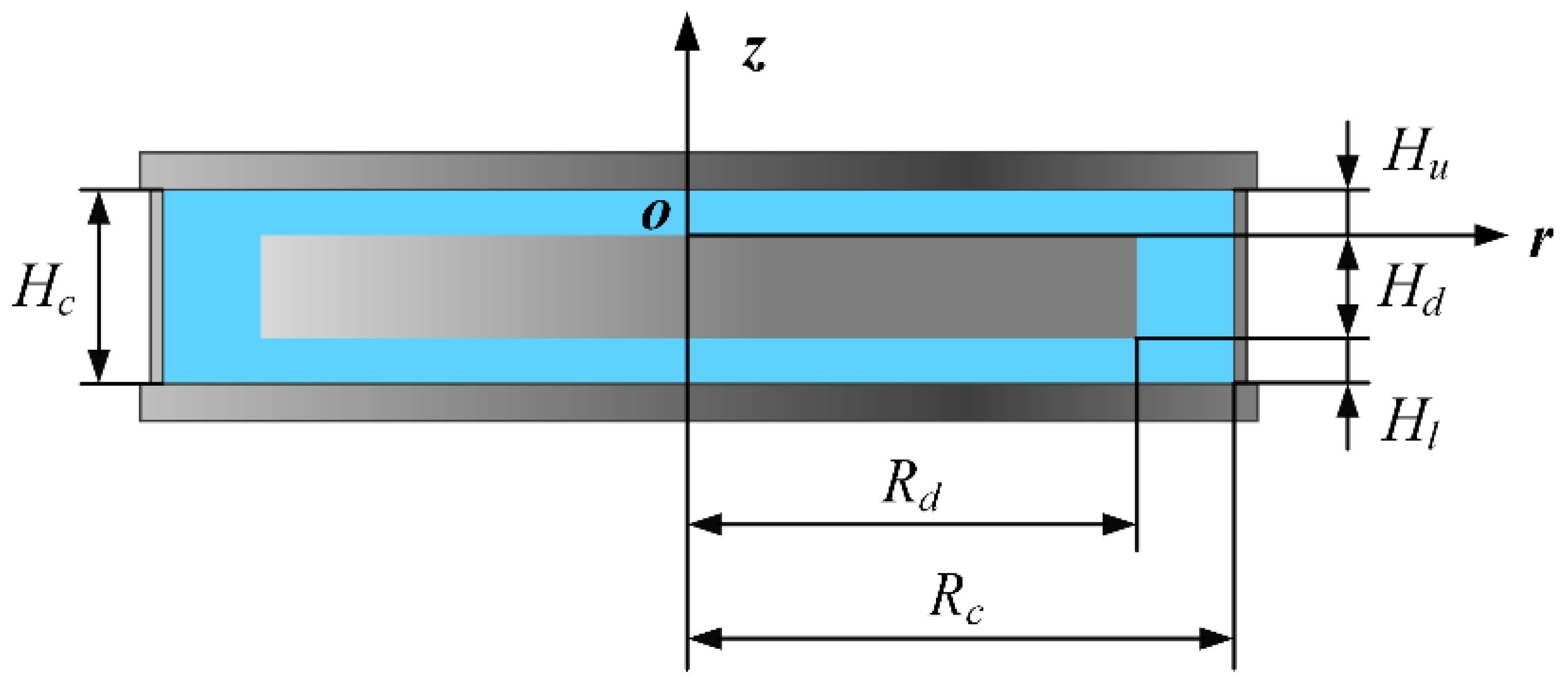

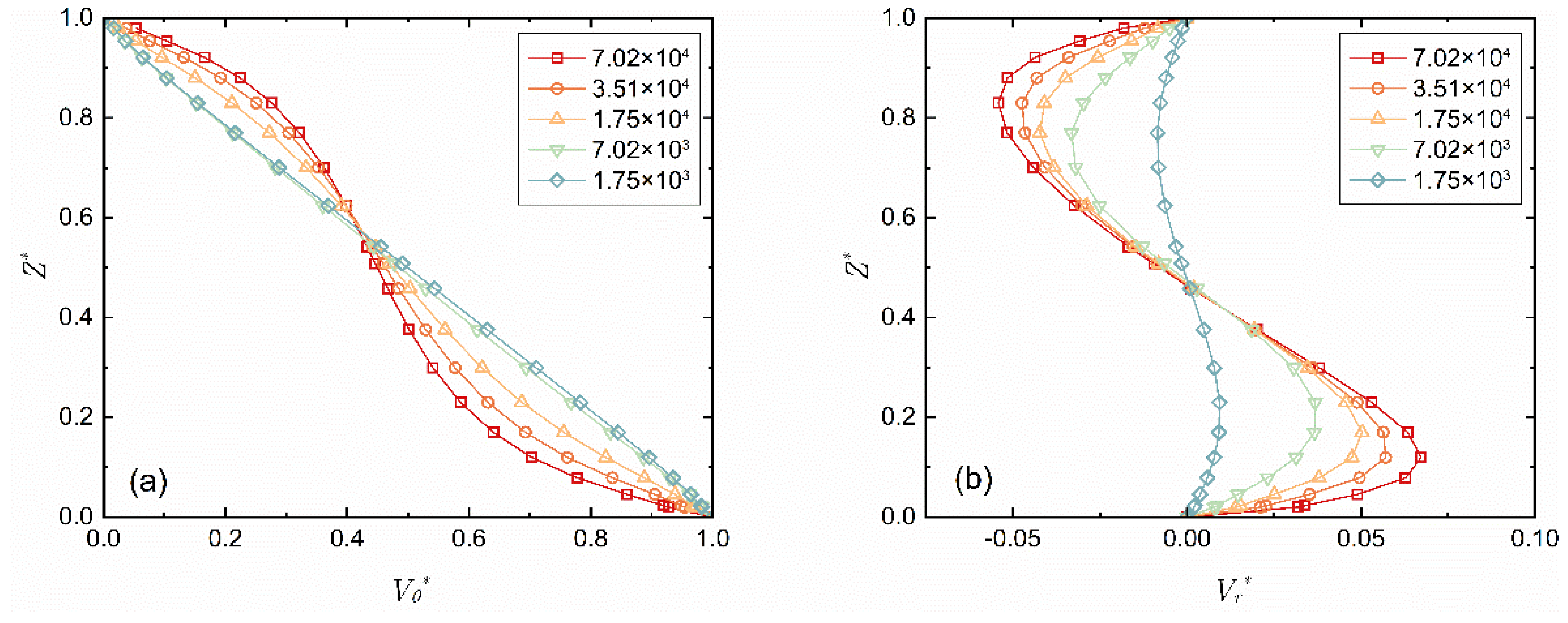
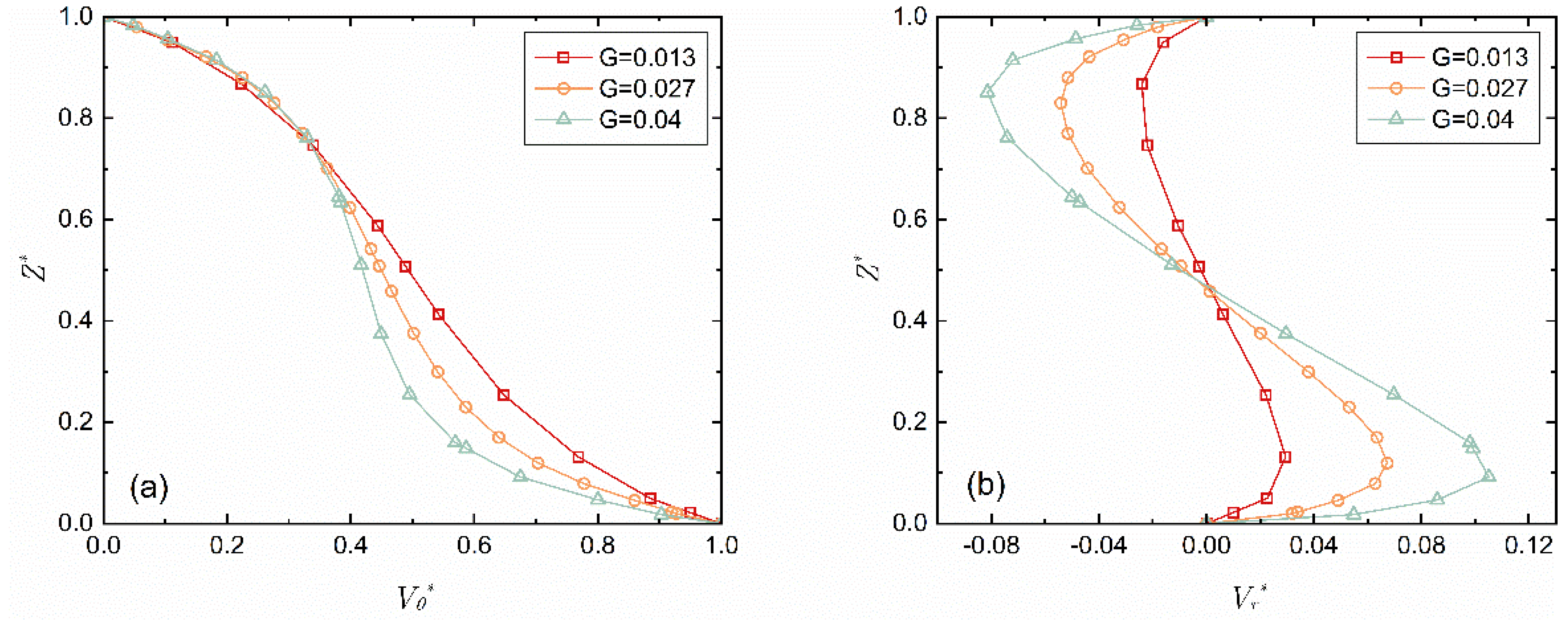
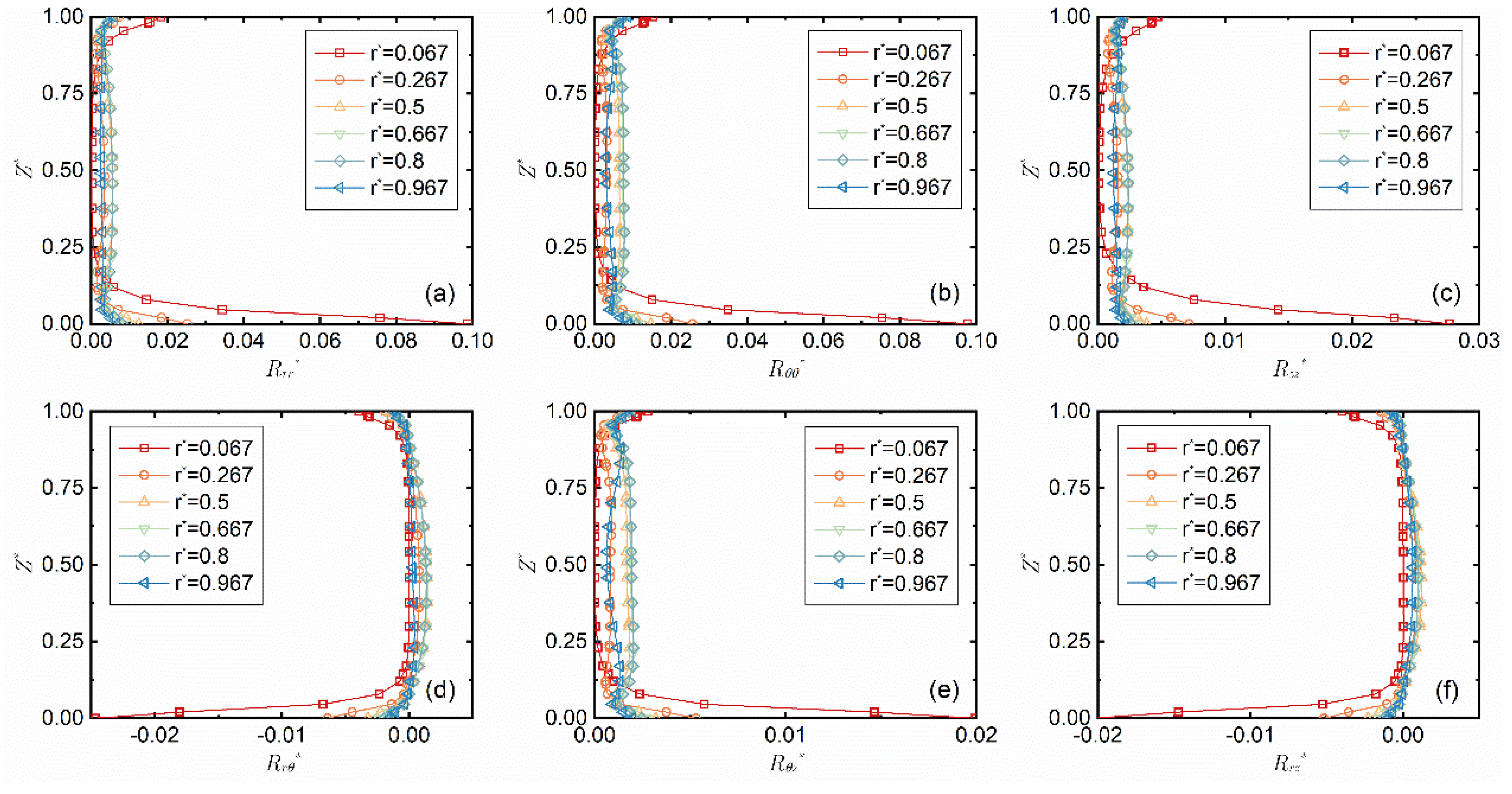

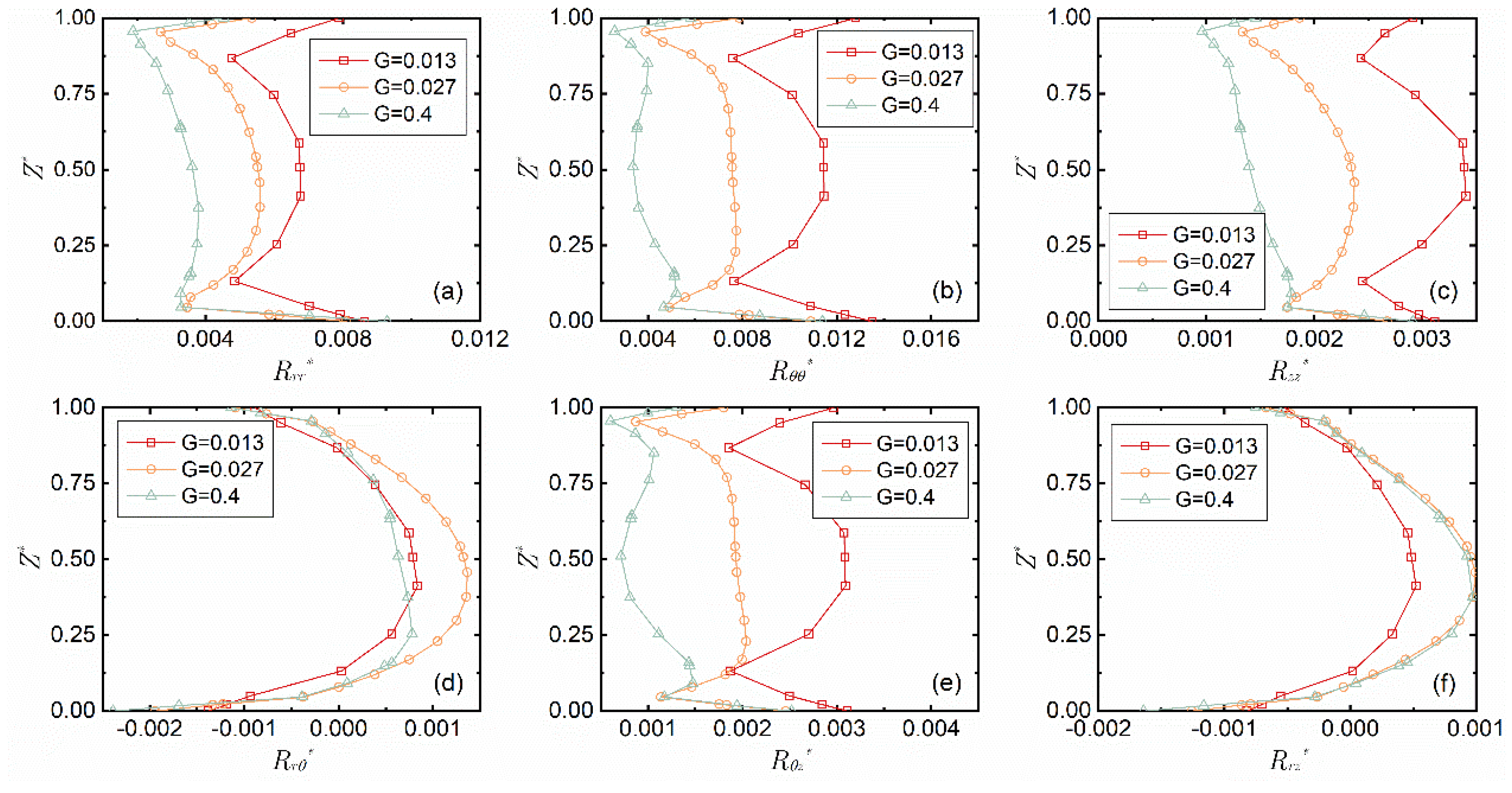
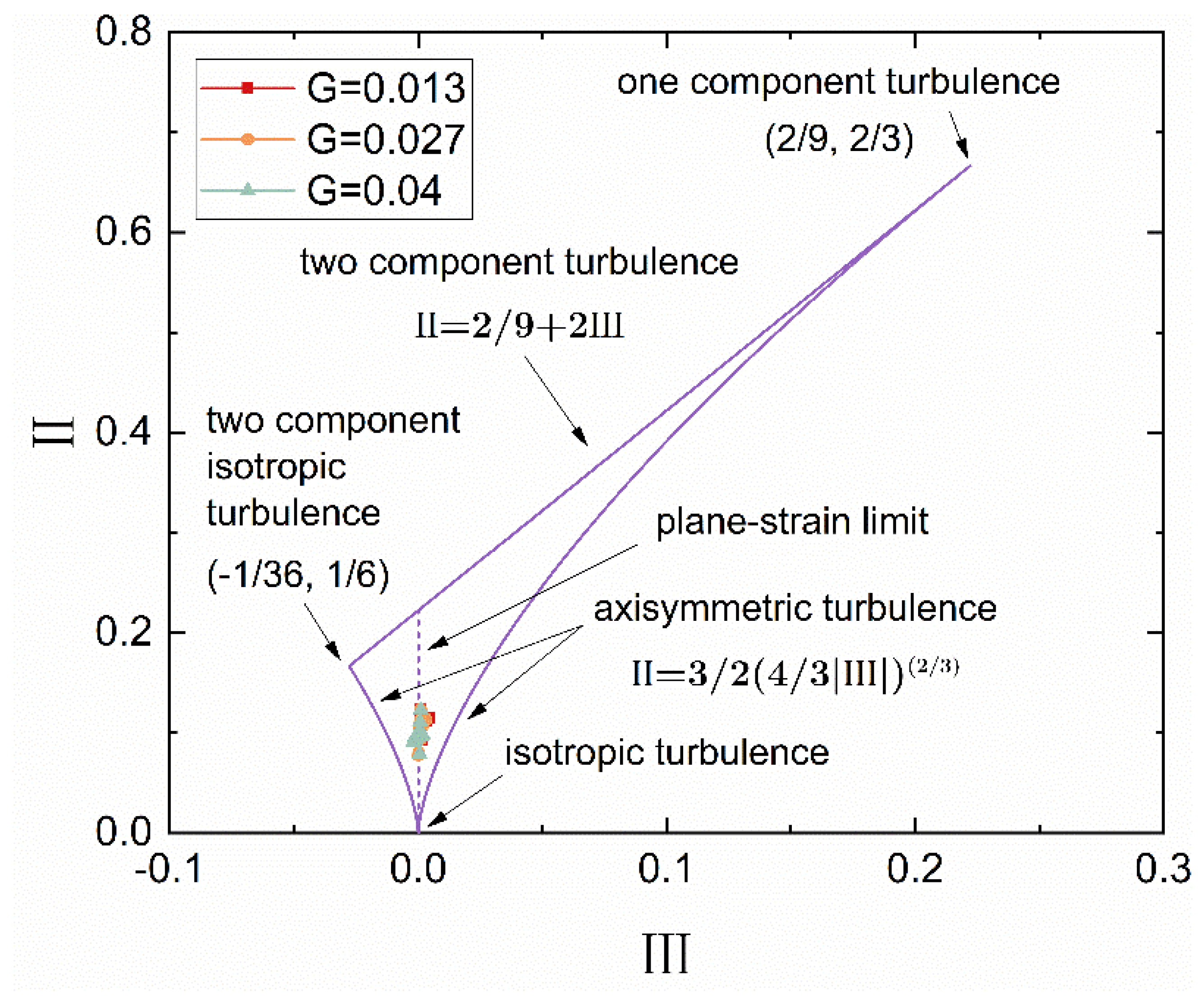
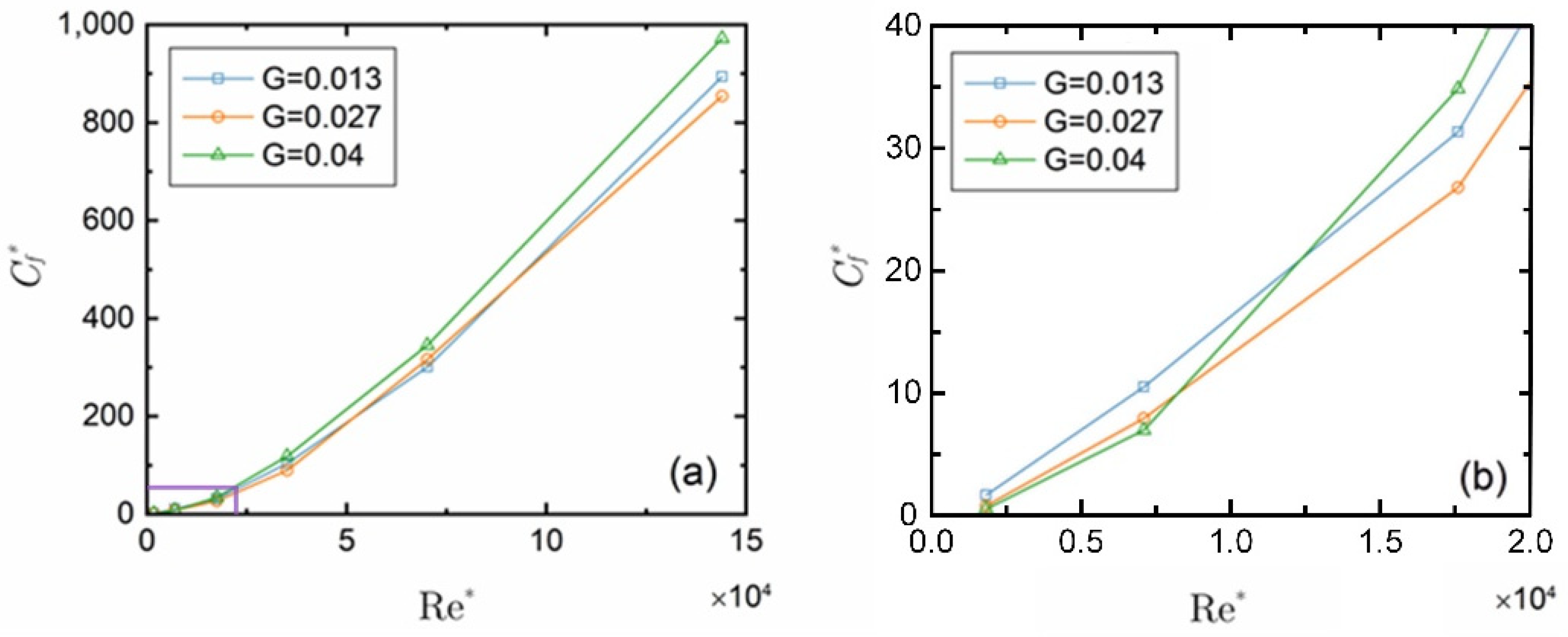


| Rd (mm) | Hd (mm) | Rc (mm) |
|---|---|---|
| 7.5 | 2 | 8 |
| Parameter | Pressure | Body Force | Momentum | Turbulent Kinetic Energy |
|---|---|---|---|---|
| Relaxation Factor | 0.3 | 0.5 | 0.4 | 0.4 |
Disclaimer/Publisher’s Note: The statements, opinions and data contained in all publications are solely those of the individual author(s) and contributor(s) and not of MDPI and/or the editor(s). MDPI and/or the editor(s) disclaim responsibility for any injury to people or property resulting from any ideas, methods, instructions or products referred to in the content. |
© 2023 by the authors. Licensee MDPI, Basel, Switzerland. This article is an open access article distributed under the terms and conditions of the Creative Commons Attribution (CC BY) license (https://creativecommons.org/licenses/by/4.0/).
Share and Cite
Wang, C.; Feng, R.; Chu, Y.; Tan, Q.; Xing, C.; Tang, F. Simulations of the Rotor-Stator-Cavity Flow in Liquid-Floating Rotor Micro Gyroscope. Micromachines 2023, 14, 793. https://doi.org/10.3390/mi14040793
Wang C, Feng R, Chu Y, Tan Q, Xing C, Tang F. Simulations of the Rotor-Stator-Cavity Flow in Liquid-Floating Rotor Micro Gyroscope. Micromachines. 2023; 14(4):793. https://doi.org/10.3390/mi14040793
Chicago/Turabian StyleWang, Chunze, Rui Feng, Yao Chu, Qing Tan, Chaoyang Xing, and Fei Tang. 2023. "Simulations of the Rotor-Stator-Cavity Flow in Liquid-Floating Rotor Micro Gyroscope" Micromachines 14, no. 4: 793. https://doi.org/10.3390/mi14040793






